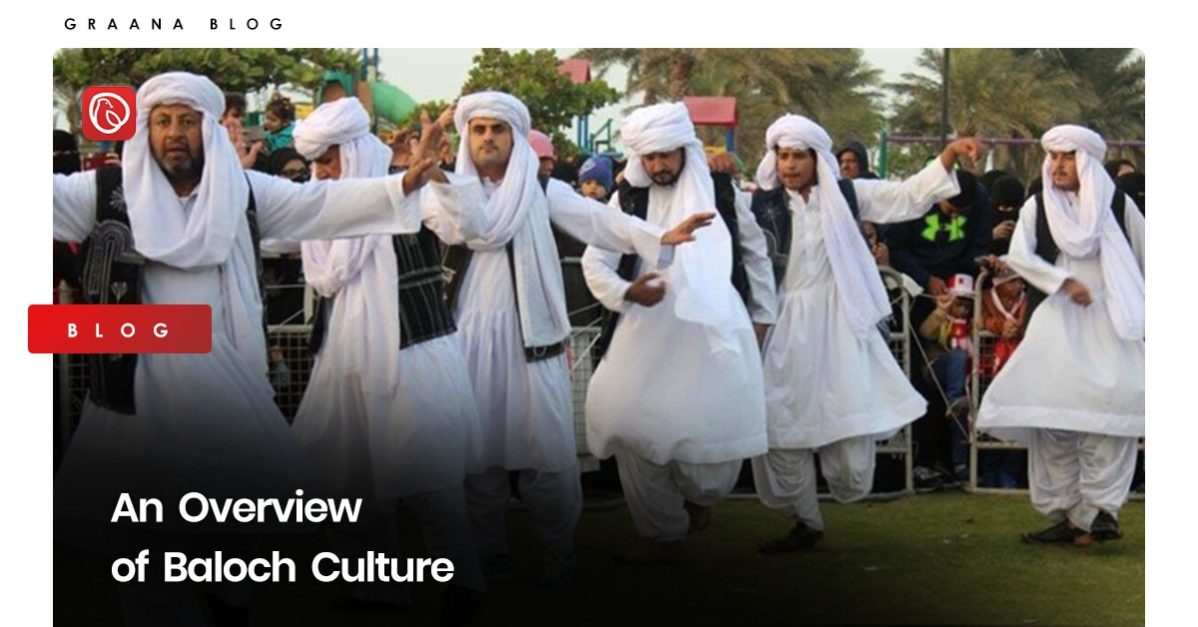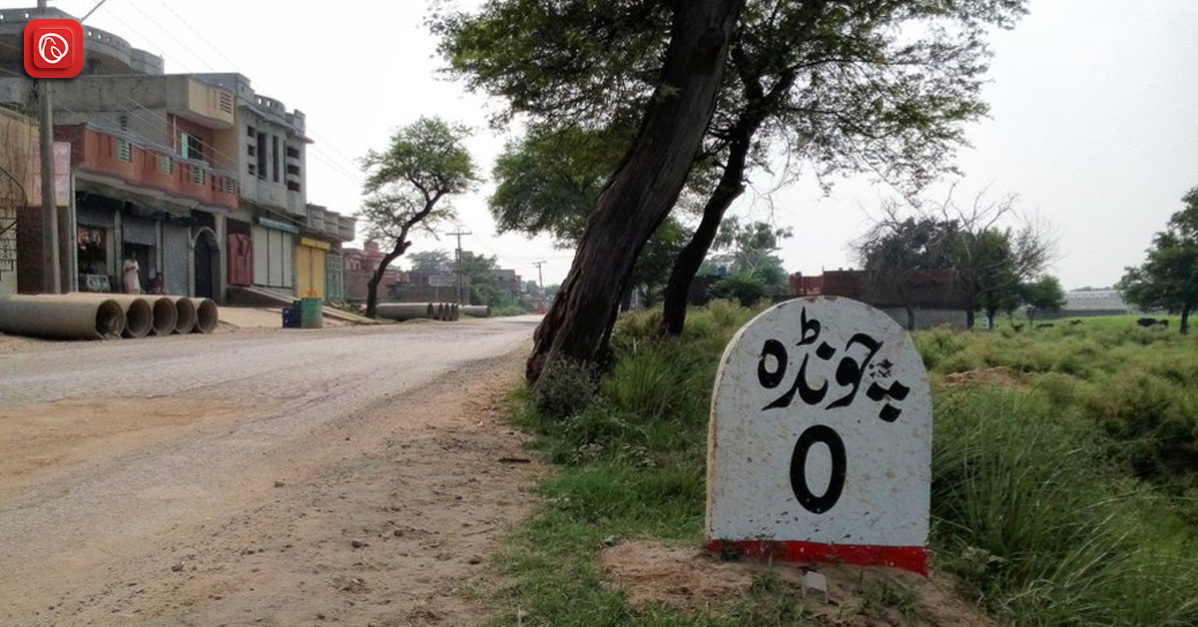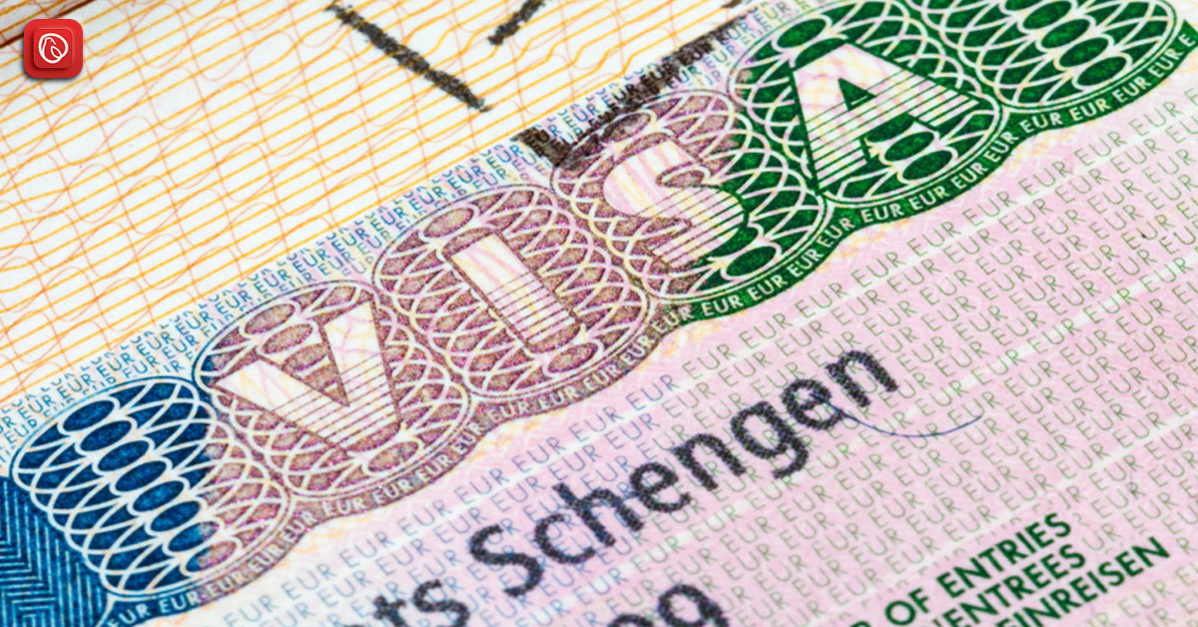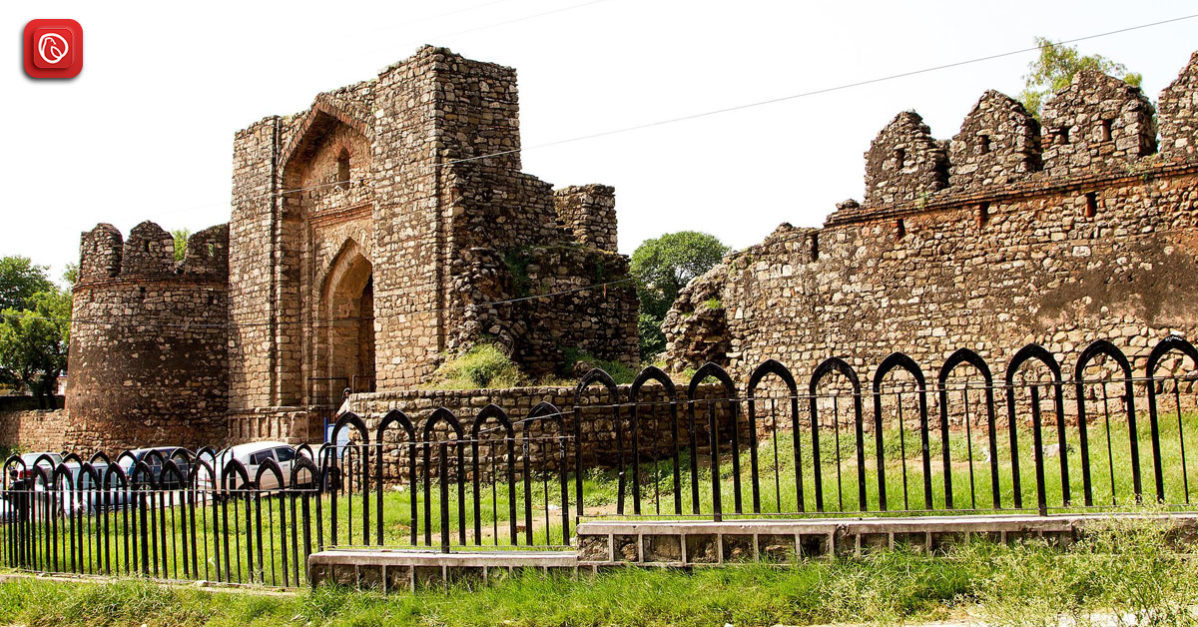If you are exploring the famous tourist attractions in Balochistan, do not forget to try their delicious cuisine. Baloch culture is rich and varied, with its attire, cuisine, music, dance, and rituals being distinctive and amazing. In this blog, Graana.com brings you an overview of Baloch culture.
Baloch History
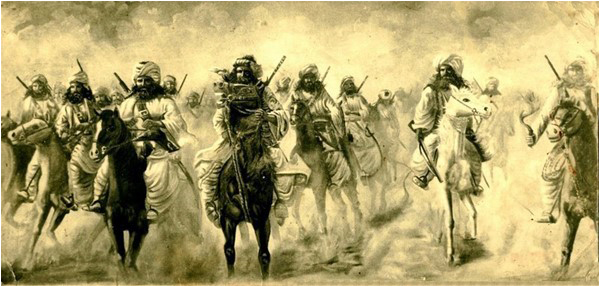
The history of the Baloch people is extensive and complex, and it is believed that the Balochi tribes have thrived in the province of Balochistan for thousands of years. The Balochi people trace their origins to the ancient Iranian tribes that lived in the area known as Greater Khorasan.
The early history of the Baloch people is mostly unknown. However, it is known that they were a predominantly pastoralist people who traveled over the Iranian plateau and the Indian subcontinent. The Balochi tribes were structured into a loose confederation of clans, often in battle with other tribal groupings and regional powers.
In the 7th century, the Islamic Caliphate invaded Balochistan, and the Balochi people were progressively converted to Islam. Around the 16th century, the Balochi tribes began to solidify their authority. They founded numerous autonomous Balochi governments, including the Khanate of Kalat, which became the dominant Balochi state and lasted until the late 19th century.
Throughout the 19th century, the British Empire expanded its influence in the Indian subcontinent and eventually acquired control of Balochistan. The Balochi people resisted British control, and various rebellions took place, including the 1857 Indian Rebellion and the 1896 Balochistan Revolt.
After the partition of India in 1947, the territory of Balochistan was partitioned between Pakistan and Iran. In conclusion, the history of the Balochi people is one of migration, tribalism, and resistance to foreign domination.
The Balochi people have retained their cultural identity and customs for generations and continue to seek greater recognition and autonomy in the present period.
Major Elements of Baloch Culture
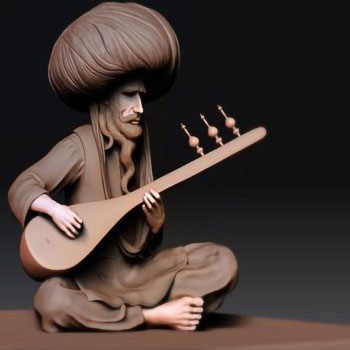
Baloch culture is a unique and diversified culture that comprises different features, including language, dress, cuisine, music, dance, and customs. The following are some key characteristics of Baloch culture:
Dress in Baloch Culture
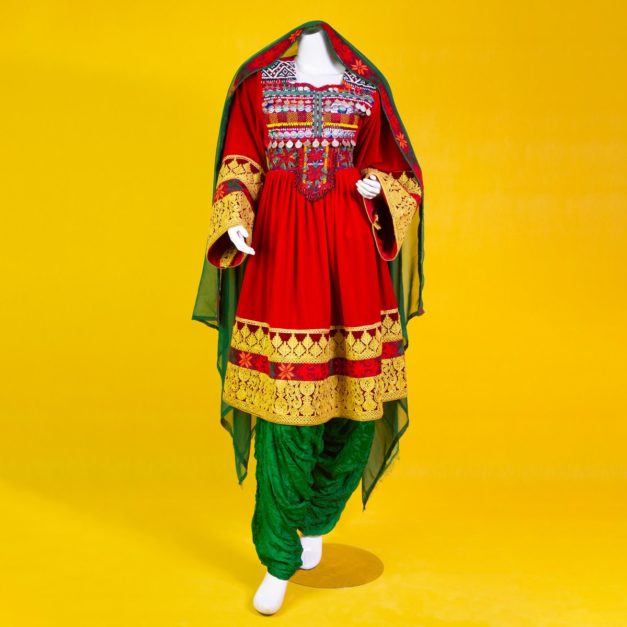
Baloch gowns are vital to Balochi culture dress and are noted for their unique and colorful designs. The traditional Baloch dress differs based on the location and gender, however, some basic aspects can be seen in most Balochi garments.
Shalwar Kameez
Shalwar Kameez is the most prevalent attire worn by both men and women in Balochistan. The shirt is normally loose-fitting, with long sleeves and a neck, while the pants are baggy and taper at the ankles. The shalwar kameez is constructed of cotton, silk, or other textiles and is often embellished with elaborate embroidery and beads.
Gurgabi
The Gurgabi is a traditional Balochi dress worn by women. It comprises a long shirt with wide sleeves and a flared skirt that reaches the ankles. The dress is normally made of silk or cotton, and the sleeves and skirt are often adorned with elaborate embroidery and beads.
Chador
The chador is a long scarf Baloch women wear to cover their heads and body. It is commonly made of silk or cotton and is draped over the head and shoulders, encompassing the entire body.
Turban
The turban is a traditional headdress worn by Balochi males. It is made of cotton or silk and is wrapped around the head in a certain fashion. The turban is often embellished with elaborate embroidery and beads.
Waistcoat
The waistcoat is a traditional Balochi clothing worn by men. It is usually made of silk or cotton and is embellished with elaborate embroidery and beading. The waistcoat is worn over the shalwar kameez and is commonly coupled with a turban.
Food in Baloch Culture
Balochi cuisine is a special fusion of Persian, Pakistani, and Indian elements. The cuisine is renowned for its fiery and fragrant dishes, prepared with materials that can be found in the region.
Meat dishes
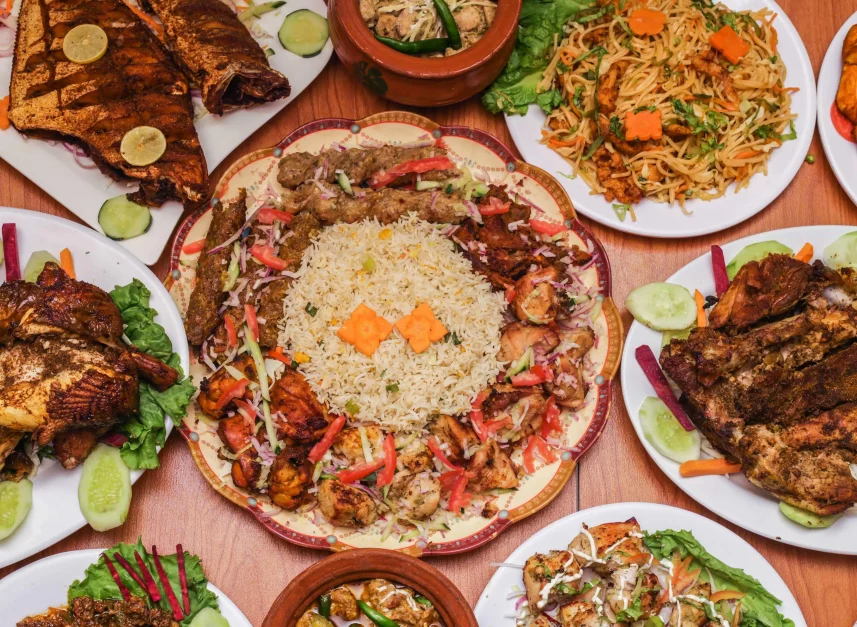
Beef, mutton, and camel are three meat types that are Balochi cuisine staples. The meat is frequently prepared in a hot and savory curry, such as “dampukht” or “saaji” (roasted meat) (slow-cooked meat). Moreover, meat is utilized in kebabs like “chapli kebab” and “seekh kebab.”
Rice-based foods
Rice is a staple in Balochi cuisine, and the area is home to many different rice-based dishes. Rice cooked with met, veggies, and spices is called “pulao.” A sweet rice dish, “Zarda” is prepared with sugar, saffron, and cardamom.
Bread
“Naan” is a well-known bread baked in a clay oven and a crucial component of Balochi cuisine. Another saffron-flavored bread called “Sheermal” is frequently served with kebabs.
Vegetables
In Balochi cooking, tomatoes, okra, and eggplant are frequently used. These veggies are frequently stir-fried with spices or cooked in hot, fragrant curry.
Dairy products
Buttermilk and yogurt, two dairy ingredients, are a staple of Balochi cuisine. These dairy products are frequently served as a side dish or used to prepare sauces.
Customs of Baloch Culture
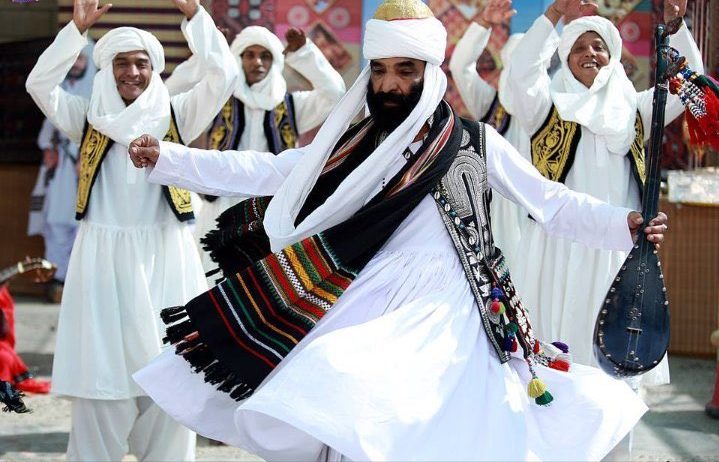
Balochi traditions and beliefs form the foundation of Balochi customs. These traditions are a vital part of Balochi culture and have been passed down from generation to generation.
Hospitality
A significant aspect of Balochi culture is hospitality. Visitors are treated with great respect and kindness since they are regarded as a blessing. Providing guests with food, tea, and other refreshments is traditional.
Balochi civilisation is divided into tribes, and each tribe has its traditions and customs. The tribal organisation is hierarchical, and it is crucial to respect elders and leaders.
Marriage traditions
In Balochi culture, getting married is a big deal. Parents or other family members frequently orchestrate the search for a compatible companion. Weddings are lavish occasions that last for several days.
The Balochi people hold the deceased in the highest regard. Funerals are a significant occasion, and it is usual to provide sympathy and support to the grieving family.
Respect is a fundamental notion in Balochi culture, and upholding one’s honor, and dignity is important. Respecting someone’s honor is a significant violation that can result in disagreements and conflict.
Language
The Balochi people, mostly in Pakistan, Iran, and Afghanistan, speak Balochi, an Indo-Iranian tongue. Millions of individuals worldwide continue to speak this ancient language, which has been around for more than 1,500 years.
An outline of Balochi, one of the most famous languages in Pakistan, is provided below:
Writing system
The Perso-Arabic script, a derivative of the Arabic alphabet, is used to write Balochi. The Arabic script does not contain any of the characters used in the Balochi language. Balochi has sophisticated grammar that includes elements like gender, number, case, and tense. The six cases of the language are used to denote a noun’s grammatical role in a sentence.
Arabic, Persian, and Urdu are only a few of the languages whose terms have been included in the vocabulary of Balochi. The Balochi language has a large number of distinctive words and phrases.
Balochi contains several dialects with distinctive pronunciation, syntax, and vocabulary. There are notable distinctions between the dialects within the two main dialect groupings, Eastern Balochi and Western Balochi.
Literature
Poetry, folktales, and melodies are part of Balochi literature’s rich legacy. Several of these pieces have been verbally transmitted from one generation to the next.
Status
Balochi has acknowledged as a minority language in Iran and Afghanistan and an official language in the Pakistani province of Balochistan. Despite this, the language is in danger of fading into obscurity because other languages like Urdu and Persian are so prevalent.
In conclusion, the culture of the Baloch people is distinct, having developed over many years. Despite the difficulties of industrialisation and globalisation, the Baloch people enjoy their traditions, which are alive and well today.
For more informative content, visit the Graana Blog
